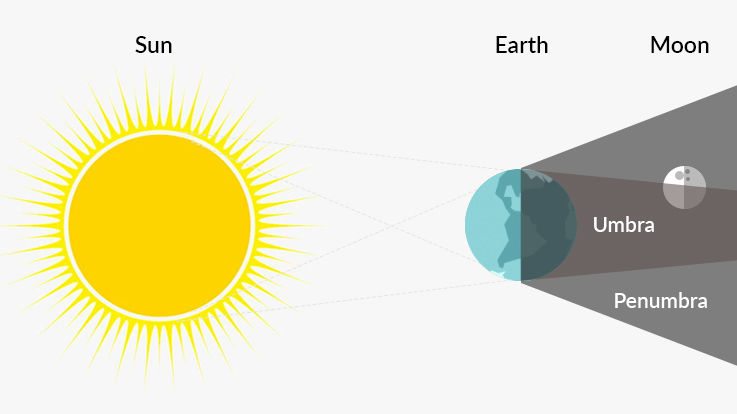Lunar Eclipse May 2023: Everything You Need To Know

Eclipse of the two most popular celestial bodies on Earth is an amazing event to observe. These events have attracted the creative imagination of mankind for a long, giving birth to many myths and misconceptions.
The year's biggest 'supermoon' will be seen on October 28, 2023. The Eclipse will start at 11:32 PM on October 28 and will end at 2:24 AM on October 29.
According to the India Meteorological Department (IMD), the eclipse will be visible in the region covering South America, North America, Antarctica, Australia, Asia, the Pacific Ocean, and the Indian Ocean.
If you are a first-time mom or expecting a baby soon, I'm sure there are many instructions flowing from the elderly for the occasion. Mostly about staying indoors and food etc. Why not try to address each of them scientifically, and know more about this amazing celestial activity?
So here we try to answer all your questions related to the present lunar eclipse.
What Exactly is Lunar Eclipse (Chandra Grahan 2023)?
A lunar eclipse happens when the sun, earth, and moon align in such a way that the earth's shadow falls on the moon. Since the moon shines by reflecting the sun's light, under eclipse it turns from silver-white color to red. However, for a full red moon, it must be a total eclipse. But not all lunar eclipses are full eclipses, instead, there can be three types of lunar eclipse:
-
Total lunar eclipse
-
Partial lunar eclipse
-
Penumbral lunar eclipse
Why is 16th May Lunar Eclipse Special?
This lunar eclipse is special because it will be a supermoon, a lunar eclipse and a red blood moon - all these at once.
What is a super moon?
When a full or new moon coincides with the Moon's closest approach to the Earth, the super moon occurs.The close proximity of the moon makes it look bigger and brighter.
What is a Penumbral Lunar Eclipse?
Evidently, the sun's size compared to the Earth causes the Earth to form two shadow cones. One is darker than the other as shown in the image below.

The darker cone is called 'umbra' and the area of the lighter shadow cone is called the penumbra. The darker shadow cone grows narrow with distance as shown in the image. However, the lighter shadow grows larger. Thus, the moon has a couple of options to hide from the sun:
- Hide completely within Umbra: Total Lunar Eclipse - Moon eventually turns completely red
- Hide partially in Umbra: Partial Lunar Eclipse - Only part of the moon turns red
- Stay in Penumbra Shadow: Penumbral Lunar Eclipse - Looks more like full moon, may appear slightly blueish
A penumbral lunar eclipse occurs when the Sun, Moon and the Earth are aligned in an imperfect way, and when the Moon moves through the outer and faint part of Earth's shadow.
Common Myths Associated with Lunar Eclipse
The short answer is, "it doesn't." There is no scientific evidence supporting any theory of harm done by the moon's escapades in Earth's shadow (lunar eclipse).
Still, there are many precautionary advice (mostly myths) floating around for expecting moms (and in general) throughout the cultures around the world. Some of the prominent ones include:
-
Avoid eating food during the eclipse.
-
You should not have sex during the night of the lunar eclipse.
-
Staying away from sharp objects.
-
Staying indoors (defeats all the fun of watching a wonderful celestial phenomenon).
-
Lightproofing the windows to prevent rays from eclipse from entering your home.
-
Watching the Lunar eclipse with naked eyes will affect eyesight.
-
You should take a bath after the eclipse.
Lunar Eclipse Vs. Solar Eclipse - Differences
Chances are you have heard a lot about the solar eclipse. Solar eclipses are rarer, happen in the daytime, and require special glasses for the fans and observers to watch. Naturally, solar eclipses create more buzz and are the big daddy of lunar eclipses when it comes to fame.
Few major differences between lunar and solar eclipses are:
| Lunar eclipse | Solar eclipse | |
| Causes | Earth's shadow falling on the moon | Moon's shadow falling on earth |
| When | Occurs on Full moon nights only | Occurs usually around the new moon |
| Visibility | Visible from everywhere on the night side of the earth | Visible only from a limited area which comes under the moon's shadow |
| Type of Eclipse | Only one out of three types of eclipses will be visible | The intensity of the moon's shadow on earth may define which type of solar eclipse you see |
| Watching | Completely safe to watch, use a normal telescope for a closer look | Watching with naked eyes not recommended, use special glasses to observe |
| Duration | Usually lasts longer. May last up to 4 hours | For a very short duration, especially total solar eclipse |
Eclipses, Types & Visibility Across The Globe 2020
| Date | Type of Eclipse | Visible in/from |
| 5-6 Jun 2020 | Penumbral lunar | Asia, Australia, Europe, and Africa |
| 21 Jun 2020 | Annular solar | Parts of Africa including the Central African Republic, Congo, and Ethiopia; south of Pakistan and northern India; and China |
| 4-5 Jul 2020 | Penumbral lunar | Most of North and South America, and Africa |
| 29-30 Nov 2020 | Penumbral lunar | North and South America, Australia, and parts of Asia |
| 14 Dec 2020 | Total Solar Eclipse | Visible from Chile and some parts of Argentina; Partial eclipse visible in some regions in southern South America, south-west Africa, and Antarctica
Image credit: Pixabay.com |
Be the first to support
Be the first to share
Comment (0)
Related Blogs & Vlogs
No related events found.
Loading more...